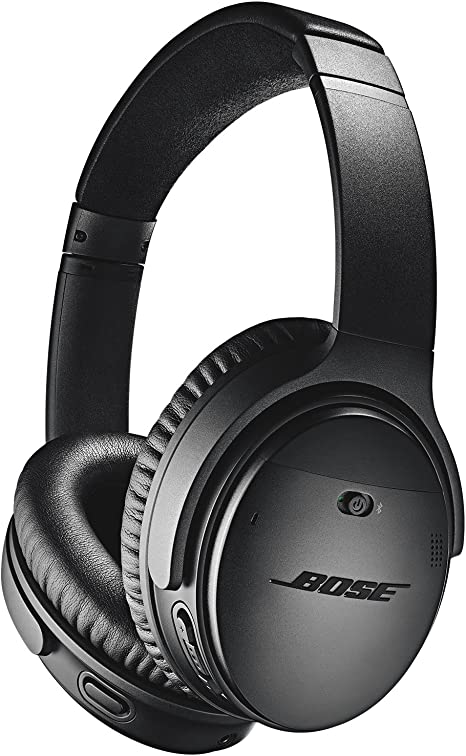Bose Wave Music System IV with Multi-CD Changer: Big Sound, Small Package
Update on Sept. 23, 2025, 3:35 a.m.
There’s a paradox that lives in the modern home. We crave the thunderous, soul-stirring sound of a cinema, the rich, enveloping bass of a live concert. Yet, we live in spaces—apartments, condos, minimalist living rooms—that are fundamentally hostile to that ambition. We want the sonic footprint of a giant, but we only have room for a pixie. This isn’t just a matter of desire versus reality; it’s a head-on collision with the unyielding laws of physics.
The core of the problem is bass. To understand why, you have to think of sound not as something you hear, but as something you feel. Sound is a physical disturbance—a pressure wave traveling through the air. High-frequency sounds, like the sizzle of a cymbal, are tight, energetic little ripples. They’re easy to create. But low-frequency sounds, the deep thrum of a bass guitar or the rumble of an explosion, are long, lazy, powerful waves. To create these waves, you need to move a lot of air.
Think of the difference between a tiny flute and a massive tuba. The flutist creates high notes by making a small column of air vibrate very quickly. The tuba player creates deep, resonant notes by vibrating a huge column of air very slowly. Traditionally, audio engineering has followed the same logic: for deep bass, you need a big speaker driver—a woofer—in a big box. It’s a brute-force approach. You want to move more air? Build a bigger piston. But what if you don’t have the space for a tuba in your living room?

An Ancient Trick: The Megaphone Legacy
For centuries, humans have known a clever workaround. If you can’t make the source of the sound bigger, you can make it more efficient. The simplest example is cupping your hands around your mouth to shout. You haven’t suddenly gained more powerful lungs; you’ve simply created a rudimentary horn. This ancient trick is about impedance matching—a fancy term for making it easier for the sound waves from your vocal cords to transfer their energy to the surrounding air, rather than just bouncing around ineffectively.
The iconic horn of an early gramophone was a more sophisticated version of this. The small vibrations of the needle were channeled into a large, flaring horn that gradually and efficiently coupled those vibrations with the air in the room, making the faint sound loud enough to hear. Horns were the original amplifiers. But they came with the old, familiar trade-off: to amplify low frequencies effectively, the horn had to be enormous. A horn capable of reproducing deep bass would be several feet long, an impractical piece of furniture for anyone. The paradox remained.
The Resonance Revolution
The true breakthrough came not from making bigger horns, but from manipulating a different, more powerful property of physics: resonance.
Resonance is a phenomenon of amplification that feels almost like magic. Imagine pushing a child on a swing. If you push at random, chaotic intervals, you’ll achieve very little. But if you time your pushes to match the swing’s natural back-and-forth rhythm—its natural resonant frequency—each small push adds to the last, and soon the child is soaring high into the air. You’ve used a small, timed input to create a massive output.
This is happening all around us. It’s why a guitar has a hollow body—to resonate with the strings and amplify their sound. It’s the principle behind blowing across the top of a bottle to create a low-pitched hum. The volume of air inside the bottle has a natural resonant frequency (a phenomenon called Helmholtz resonance), and your breath provides the energy to set it ringing.
Audio engineers realized they could use this principle. What if, instead of a flaring horn, they could build a precisely tuned “acoustic corridor” for the sound from a small speaker? What if they could design a pipe or a tunnel of a specific length, so that certain low frequencies, upon entering it, would start to resonate, just like the air in the bottle or the child on the swing? The sound waves would bounce back and forth, reinforcing each other, building in intensity until they emerged from the other end, powerfully amplified.
Wrangling Sound Waves: The Modern Horn
This is the elegant science behind what is known as a waveguide. A waveguide, in its essence, is a carefully designed tunnel for sound. By controlling its length, shape, and volume, engineers can force a small speaker to perform feats of acoustic heroism, particularly in the low-frequency range where it is naturally weakest.
The only problem? Physics dictates that for very low frequencies, the required waveguide needs to be quite long—often several feet. This brings us back to the original paradox. How do you fit a multi-foot-long pipe inside a compact, bookshelf-sized stereo?
The answer is an engineering marvel of spatial optimization: you fold it.
This is precisely the solution pioneered by Dr. Amar G. Bose and his team. A professor at MIT, Dr. Bose was famously dissatisfied with the sound of high-end speakers of his day. His research-led approach sought to solve the bass problem not with bigger drivers, but with smarter physics. In a system like the Bose Wave, you will find two intricately folded waveguides, each one an astonishing 26 inches long, snaking their way through the inside of the compact enclosure. A small, efficient speaker driver fires sound into the start of these tunnels. As the sound waves travel along the precisely calculated path, specific low frequencies are excited into resonance, gaining immense energy and pressure before they exit into the room.
The result is a deep, rich, and clear bass that seems utterly disproportionate to the physical size of the device. It’s not brute force; it’s acoustic judo, using the energy of the sound wave itself to amplify it. It is the tuba, folded origami-like into the size of a flute.
The Final Illusionist: Your Brain
But the engineering wizardry doesn’t stop with physics. The most sophisticated audio processing unit involved in your listening experience is the one between your ears: your brain. Top-tier audio design is as much about psychoacoustics—the science of how we perceive sound—as it is about physical acoustics.
Dr. Bose’s research highlighted that at a live concert, the majority of the sound we hear is reflected sound, bouncing off walls, ceilings, and other people before it reaches us. This cloud of reflected sound is what gives us our sense of space, of being in a room with the music. This is why many advanced audio systems, including the ones employing waveguides, are also meticulously tuned with Digital Signal Processing (DSP). This “brain” behind the brawn not only equalizes the sound for clarity but also helps manage how it radiates into the room, creating a wider, more spacious soundstage than two small speakers should be able to produce.
There’s an even more fascinating trick at play. Our brains are incredible pattern-completion machines. When it comes to music, if we hear the harmonic overtones of a deep bass note (say, 100Hz, 150Hz, 200Hz), our brain can often create the perception of the fundamental note (50Hz) even if it’s physically weak or entirely absent. This auditory illusion is called the “missing fundamental.” A cleverly designed compact system can exploit this, focusing on reproducing the bass harmonics with pristine clarity, effectively tricking our brain into hearing a fundamental low note that the small speaker can’t physically generate with much power.
When you listen to a compact system that produces astonishingly good sound, you’re not just hearing a speaker. You are experiencing a symphony of converging sciences: the raw physics of resonance, the clever mechanical engineering of folded waveguides, and the subtle neurological tricks of psychoacoustics. It is a beautiful solution to an impossible problem, a reminder that the most elegant engineering is often invisible, hidden in plain sight, turning a simple shoebox into something that sounds, impossibly, like a concert hall.













































